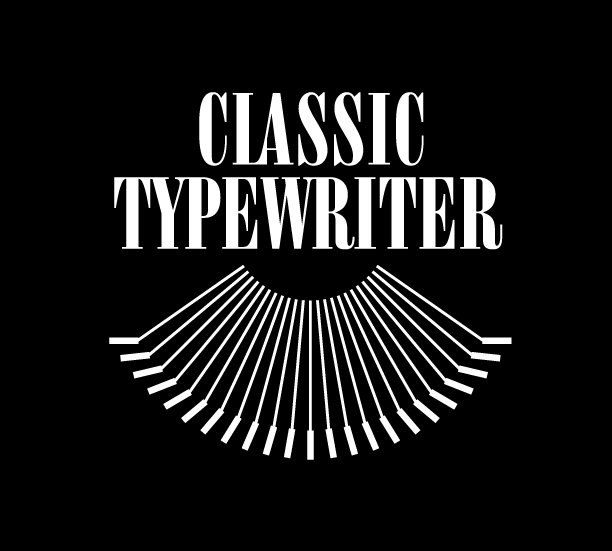Evolution of Classic Typewriter
Steven Budden, Classic Typewriter
Tech support.
I now have a 40 year Smith Corona factory trained tech helping me out with some of the 60's - 70's models, including the 'mystery' models. So the quality has improved. These are an initiation into the world of typewriters.
Cleaner insides.
Over the last 1000 machines, I've learned to get the insides more immaculate. The first few were more challenged in this way. I now have a parts washer machine with a certain blend of solvents, as well as a few rust removal protocols, synthetic oils, etc: and a generally higher standard.
Extra parts.
I've amassed a few hundred parts machines that I can draw from as needed. I probably have more parts available than 99% of techs working today.😉 Just by sheer accident and volume.
Working Guarantee.
Every machine arrives working, or we resolve it. It works out 99% of the time, and our refined packing process helps a lot in this!
Eco-friendly and SAFE packing materials.
It pains me whenever I receive a box with a typewriter inside, an dn it is full of plastic which will wind up in the ocean, no doubt. So we use eco-friendly materials wherever possible, and a 275 pound double-walled box.
Paper Manuals.
Starting next week, I'm going to include a paper facsimile of the manual with every new order, and a little 'Typewritten Rapture: a manifesto - an advocation of the deep work and the vintage writing machine as an ultimate tool. (I'll also send a link to order that soon). My goal is to have you open the box, swoon, and start writing life-changing or world-changing streams of words. Ok?
Paper Newsletter.
Next month, I'll be producing monthly paper newsletter about all things analog productivity, deep work, and defeating digital addictions in order to live one's destiny. For a nominal monthly fee. Hey, people here love paper: one does try to oblige.
Productivity / writing Coaching.
I'm maybe 15 days into my page per day challenge to myself. People asked me about this and I'll invite a few others onto the journey soon.
I'm writing daily deeply, in the midst of a chaotic life, parent of two, running two businesses, etc, and have stumbled upon some serenity hacks.
You'll get to join us on one Page Per Day call for free, where we'll launch your idiosyncratic, perfectly YOU writing practice together, and provide some ways to stick with it. (After that you can remain with us for a monthly fee).
More To Love.
The healing work goes into my Budden blog here, typewriter ruminations go into the Classic Typewriter substack. (you may be there now).
PS. Buying anything now will contribute to that debacle .
New rubber: Rubber is a complex thing. Some of the old platens are hard, though they work. We at the bare minimum resurface them, meaning remove the outer layer. Lately, we've been putting on new platens more and more. Certain models require this. I don't do this as 'automatically' as some technicians: that's personal, really. I used the original platens to write thousands of pages, as did Woody Allen and other luminaries.
Also, there's a mystical quality in the machine in its original state, imbued with the life-force of the previous owners, the makers, the world at the time. (Read TC Lethbridge for more on 'inanimate' objects holding measurable frequency of their prior owners). However, sometimes new rubber is called for! it sort of depends on what you want to do with it.
Sometimes, it is essential, because print quality is poor, or the platen won't grip the paper.
I usually do replace the feet, which are now 3d printed. Some of them are mold produced and sort of 'lower quality', in the sense that they're weird and handmade looking. Some are perfect, particularly the ones for the Oliver 9 and the Underwood Desktop Model 5.
That's the reason I eschewed the notion originally, was because many of the 'rubber' replacement attempts I received were sort of janky. Oddly cut tubes, rubber shrink-wrapped original platens, and any number of oddities.
JJ Short is a company in the US that still replaces feed rollers and platens. For how long is anyone's guess, though that's who I use. It costs a little more, but it is better work. Takes a few weeks as well, so I try to have some on hand to use as needed / desired.
So, in summation Classic Typewriter now offers:
Writing machine in stunning mechanical and working condition.
Upper and lower-case adjustment (which most new-breed of techs seem to miss). The upper and lower case should align, for the most part (on some VERY old machines there is a slight mismatch which it would be a risk to continue to push it). They have their own vintage charm.
Type slugs cleaned and checked so each letter prints clearly and beautifully.
Original case in great or better condition OR | a foam-lined flight case designed to protect your writing machine from drops or small explosives. These are much more protective for the machine than the original case, and less prone to mildew and odd smells.
Remember, old cases are, for the most part, plywood covered in cloth. Musty smells often bloom while they're closed for a while. That foam, on the other hand, is antimicrobial. Again, it depends upon your preference and your use case. If you want an original case for the nostalgia, of course! If you want to lug the machine around, sometimes the flight case is a better option. (Something like the Hermes 3000 or Hermes Baby already has a perfectly good metal shell built into the design, as do some
Olympia SFs (a plastic clamshell), etc.
I love you, dear writer. I love this process, this mission. I don't know how long I'll be doing this for, but I said that a few years ago.
Keep finding your deep voice.
Write on,
Steven Budden Jr.
Classic Typewriter.

